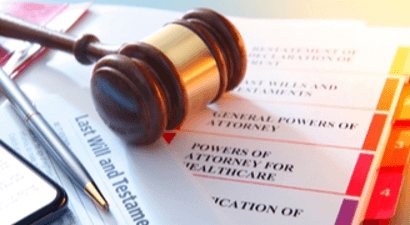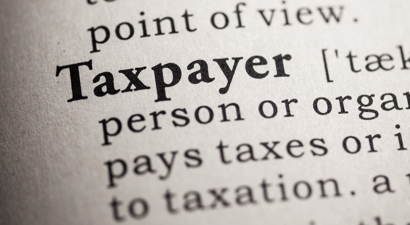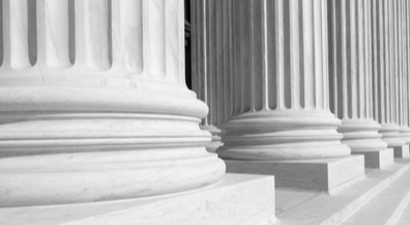The Draft Carbon Tax Bill and Carbon Offsets Regulations
In November 2015, following on the announcement made by the Minister of Finance in the 2015 Budget Speech, the National Treasury published the Draft Carbon Tax Bill for public comment. South Africa has committed to reduce greenhouse gas (GHG) emissions below 34% by 2020 and 42% by 2025.
Carbon tax is a tax levied on the carbon content of fuels and is form of carbon pricing. Carbon is present in every hydrocarbon fuel (coal, petroleum, and natural gas) and is released as carbon dioxide (CO2) when they are burnt. In contrast, non-combustion energy sources such as wind, sunlight, hydropower, and nuclear, do not convert hydrocarbons to CO2.
According to Treasury, carbon tax seeks to price carbon by obliging the polluter to internalise the external costs of emitting carbon, and contribute towards addressing the harm caused by such pollution.
Carbon tax design
The revised carbon tax design as contained in the Draft Carbon Tax Bill includes the following features:
- A basic 60% tax-free threshold during the first phase of the carbon tax, from implementation date up to 2020
- A 10% tax-free allowance for process emissions to provide relief for industries where the chemical processes inherent in the industry are fixed and there is therefore limited scope for taxpayers reducing GHG emissions
- A 10% tax-free allowance for trade exposed sectors (industries where exports account for a significant portion of total revenue)
- Recognition for early actions and /or efforts to reduce emissions that beat the industry average in the form of a tax-free allowance of up to 5 per cent;
- A carbon offsets allowance of between 5% and 10% which allow taxpayers to reduce their carbon tax liability by investing in South African based approved carbon mitigating projects
- To recognize the role of carbon budgets, an additional 5% tax free allowance for companies participating in phase 1 (up to 2020) of the carbon budgeting system
The combined effect of all of the above tax-free thresholds will be capped at 95 per cent; and an initial marginal carbon tax rate of R120 per ton CO2-e (carbon dioxide equivalent) will apply. However, taking into account all of the above tax-free thresholds, the effective carbon tax rate will vary between R6 and R48 per ton CO2-e. These tax-free exemptions will range between 60% and 95% of total emissions. This implies that the carbon tax will be imposed on only 5% to 40% per cent of actual emissions during the initial period.
The initial phase of the carbon tax is intended to end in 2020, after which the percentage-based tax-free allowance could be replaced with an absolute tax-free threshold. This tax-free threshold may be aligned with carbon budgets.
Carbon Offsets
The draft Regulations on the Carbon Offsets were published on 20 June 2016 and sets out the procedure for claiming the carbon offset allowance and for the use of carbon offsets by taxpayers to reduce their carbon tax liability.
As per the explanatory note for the Draft Regulations on the Carbon Offset, carbon offsets are investments in specific projects that reduce, avoid or sequester emissions. It is an external investment that allows a firm to access GHG mitigation options at a lower cost than investment in its current operations.
It is envisaged that at the initial stages of the carbon offset scheme, carbon offsets will only be able to be generated by an approved project. The Draft Regulations define an approved project as a Clean Development Mechanism (CDM) project, a Verified Carbon Standard (VCS) project, a Gold Standard (GS) project or a project that complies with another standard approved by the Minister of Energy or a delegated authority. CDM, VCS and GS are existing accepted international carbon offset standards, each with their own associated institutional and market infrastructure.
Eligibility
In terms of Regulation 2 of the Draft Regulations, an offset will be allowed in terms of s20 of the Draft Bill, in respect of any certified emission reduction (CER) derived from the furtherance of an approved project that is carried on by a taxpayer on or after 1 January 2017 if that project is wholly undertaken in South Africa and if that project is in respect of an activity that is not subject to the carbon tax. In other words, projects that generate carbon offset credits must occur outside the scope of activities that are subject to carbon tax.
Furthermore, projects registered prior to 1 January 2017 will have to meet the following conditions to be eligible under the scheme:
- Offset credits issued prior to the implementation of the carbon tax which have not yet been retired will be eligible, provided they are transferred from an international registry to the South African registry within 12 months of the implementation of the tax; and
- Projects that are currently under development and which will be registered before the start date of the tax and credits issued following the introduction of the carbon tax will have to be transferred from an international registry to the South African registry within 6 months of their issuance.
Offset duration period
To address the issue of permanence pertaining to certain offset projects, the crediting period for carbon offset projects will require periodic reviews to ensure, most importantly that the baseline assumptions of the project are still valid.
Regulation 3 provides for the offset duration period for international standards as follows:
- CDM project – offset may be used for a once-off non-renewable 10-year period or for a 7-year period which is twice renewable (constituting a period of 21 years in total);
- GS project – same as CDM project;
- VCS project – all non-AFOLU projects will have a 10 year crediting period which may be renewed twice and all other AFOLU projects may be credited for a minimum period of 20 years and a maximum period of 100 years which may be renewed four times; and
- Project approved under other standards – will have a crediting period specified by the Minister of Energy or a delegated authority.
Limitation on Allowance
Projects benefiting from other government incentives are excluded as this could result in a doubling of the emission reduction benefits and financial incentives for the project. The incentive programmes will include, but are not limited to, projects registered for the Energy Efficiency Savings Tax Incentive (in terms of section 12L of the Income Tax Act, 1962) and the Renewable Energy Independent Power Producers Procurement Programme (REIPPPP).
Procedure for Claiming Allowance
Regulation 7 states that a taxpayer that intends to utilise an offset as a carbon tax allowance must register that offset with the administrator in the form and manner and at the place that the administrator may determine. The Designated National Authority (DNA) within the Department of Energy must act as the administrator.
The Explanatory Note summarises the envisaged process whereby the transfer of carbon credits and generation of carbon-offset certificates will take place as follows:
- Once emissions reductions are verified, the project developer may request the issuance of carbon credits, being CERs under the CDM, Verified Carbon Units (VCUs) under the VS and GS credits under the GS
- Upon approval of the project by the issuing bodies, the credits are deposited into the project developer’s account in the relevant registry (CDM, VCS or GS)
- For the credits to be used to offset a tax liability under the South African carbon tax scheme, offset developers or entities responsible under the carbon tax will have to request credits to be cancelled in the international registry and then transferred to the South African registry
- This will be a mirror system where one tonne CO2 is transferred as such into the South African registry. These carbon credits will have to meet the local eligibility criteria and then are registered in the South African registry only after the DNA has received confirmation that the same credits have been cancelled in the respective international registry. Offset developers or entities must obtain a carbon-offset certificate from the DNA
Offset Registry
Regulation 8 makes provision for a suitable registry for the South African carbon offsets scheme, which is crucial to avoid double-counting of emissions reductions and to ensure credibility of the scheme.
The requirements of such a registry would include:
- Record ownership and facilitate transfers of ownership in an accurate and auditable way;
- Ensure administrative efficiency;
- Provide access to specified users in the required way, such as via the internet;
- Keep transaction costs low;
- Ensure timeous execution of transfers;
- Ensure very low risk of fraud; and
- Provide adequate administrative support
Offset Certificate
Regulation 9 envisages the requirement for taxpayers to obtain an offset certificate, which will specify the emissions reductions and will be crucial for taxpayers in order to offset their carbon tax liability.
The Explanatory Note proposes that as a preliminary step, project developers would apply to the administrator, DNA, for a pre-screening letter that a proposed project would be eligible against the domestic eligibility requirements of the carbon tax.
Before a project is undertaken, the project developers apply for an Extended Letters of Approval (ELoA) from the DNA to confirm domestic eligibility. The project then needs to be undertaken under the rules and approved model of the international offset standard (CDM, VCS, or GS) or an approved methodology for South African specific projects and then issued with credits under the respective standard. Where an international offset standard has been used, the project developers would need to apply for the international program credits to be transferred into the domestic registry.
It is proposed that the DNA will then assess each request for transfer against the domestic eligibility criteria and would either accept or reject the transfer, and if accepted, the DNA will issue corresponding domestic carbon offsets into the nominated account of the transferee in the domestic offset registry. The units issued into the domestic registry could be either linked to the specific CER, if this is a CDM project, or simply represent an undifferentiated CER held in the national account.
Entities liable for carbon tax will have to surrender their carbon offset credits to SARS should they wish to use the offset credits to reduce their carbon tax liability. If SARS decides to carry out an audit or a specific carbon tax liable entity, the DNA will work with SARS to provide information on the offset credits used by an entity to reduce its tax liability. This will be achieved through providing SARS access to the offset registry/database, which should contain proof of retirement of the carbon offsets.
The certificate issued by the DNA must contain specific information, which is detailed in Regulation 10 of the Act. In terms of Regulation 9, the taxpayer will have to retain this certificate for a minimum period of 15 years.
Conclusion
Treasury maintain that the carbon tax is coming and the timeframe for commencement, including progressing through the Parliamentary process, remains January 2017.
Opportunities currently exist for emitters of greenhouse gas to take strategic steps to ameliorate the impact of the carbon tax on their business, alternatively for entities that have the potential to generate carbon offsets for use under the tax scheme to take the strategic steps that will permit them to capitalise on this opportunity.





